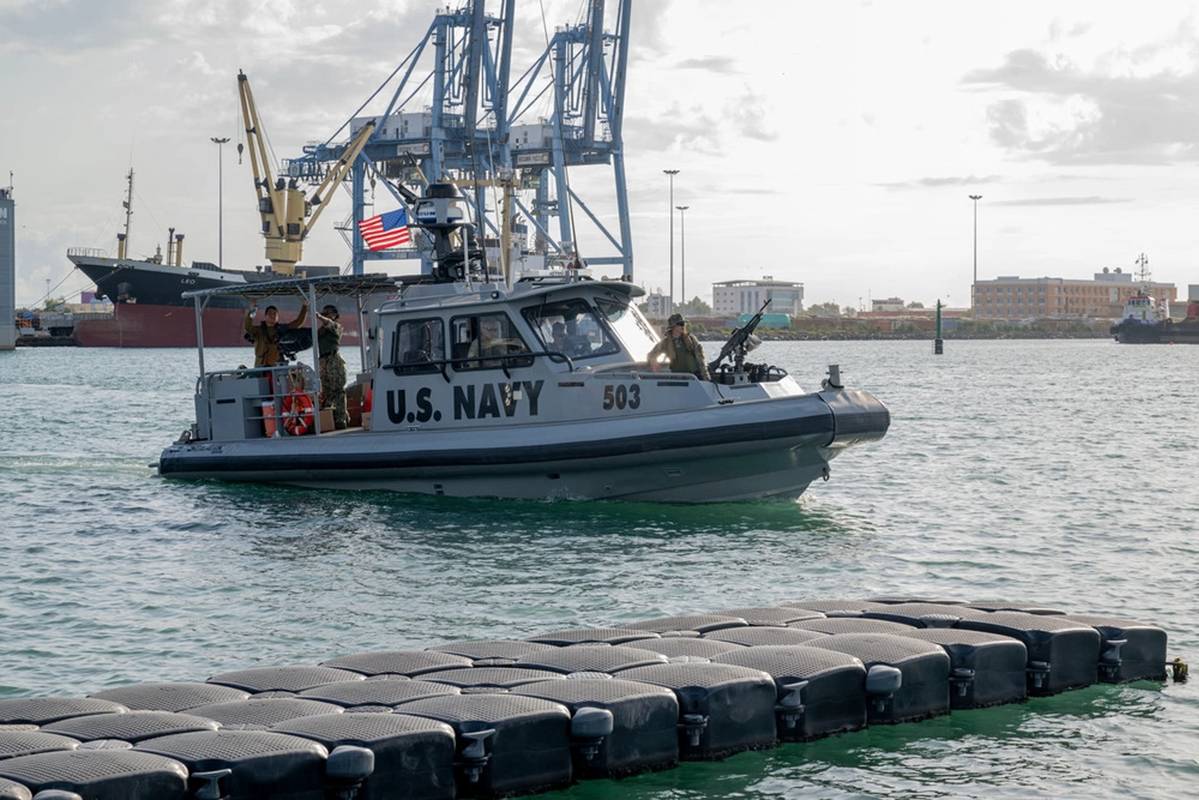U.S. Navy
Boats
The Navy’s Maritime Expeditionary Security Force
Providing security from sea and land.
By Edward Lundquist
Sailors assigned to Maritime Expeditionary Security Squadron TWO’s (MSRON TWO) Bravo Company get underway on a 40-foot Patrol Boat to conduct seaward security operations during the command’s Final Evaluation Problem (FEP). The exercise is a capstone event which determines the readiness of the squadron to deploy worldwide in order to conduct maritime security operations.
US Navy photos taken by Chief Intelligence Specialist Jason MedarisThe Navy’s Maritime Expeditionary Security Force (MESF) operates ashore, at sea and in the waters of harbors, rivers, bays and across the littorals to conduct maritime security operations across all phases of military operations by providing port and harbor security and high-value asset security inland, on coastal waterways, and ashore.
According to Lt. Cmdr. Kara Handley, Navy Expeditionary Combat Command spokesperson, the Navy’s Maritime Expeditionary Security Force currently operates 34-foot and 40-foot patrol boats, which are armed with crew-served weapons and manned by trained Sailors.
The Maritime Expeditionary Security Force consists of two Maritime Expeditionary Security Groups (MESG). Maritime Expeditionary Security Group 1 is headquartered in San Diego, California and oversees one active duty and two Reserve maritime security squadrons (MSRONs) as well as a forward deployed detachment in Guam. Maritime Expeditionary Security Group 2 is headquartered in Virginia Beach, Virginia and oversees two active duty and two Reserve maritime security squadrons as well as a forward deployed detachment in Bahrain.
“Our MSRONs deploy globally to provide security at sea, in the littorals and on land in 2nd, 3rd, 4th, 5th, 6th and 7th Fleets. MESF also has two forward deployed detachments in Guam (MESG-1 Det Guam) and Bahrain (MESG-2 Det Bahrain),” Handley said. “Two additional Reserve MSRONs under each MESG are scheduled to commission in the near future.”
Within both the active-duty and Reserve MSRONs, there are security boat companies that oversee boat detachments—the crews--that provide seaward security using the security patrol boats. Each MSRON also has a security platoon that oversees the security teams who are trained to provide landward, embarked and aircraft security. Each MSRON also has a headquarters element that commands and controls the squadron in support of their operational commander. The MSRONs are also charged with supporting high-value unit (HVU) security operations and have various HVU detachments within their organization.
Handley said the boats are manned by a coxswain, navigator/radio telecommunications, bow gunner, and aft gunner/boat engineer.
MESF Sailors go through a variety of training courses with a focus on small craft operations, serving as a coxswain, operating and maintaining small arms and crew served weapons, safe navigation, operating communication systems, planning missions, and supporting a tactical operations center. In addition to their personal training, the MSRON units of action will also conduct advanced scenario-based training to demonstrate their capabilities before their immediate superior in command will certify them to deploy,” said Handley.
“Outside of the security patrol boats within the Maritime Expeditionary Security Force, Navy Expeditionary Combat Command maintains a variety of small boats for explosive ordnance disposal, diving and salvage, and construction missions,” Handley said. “These boats include the 9m and 11m rigid hull inflatable boats (RHIBS) as well as zodiac boats.”
